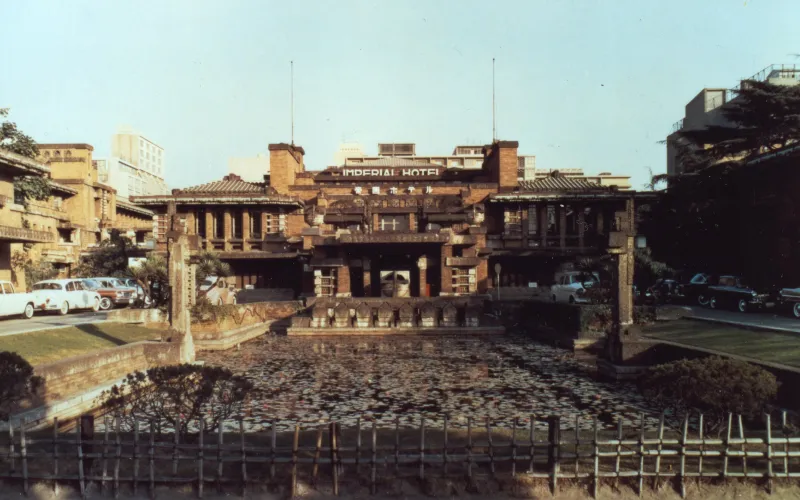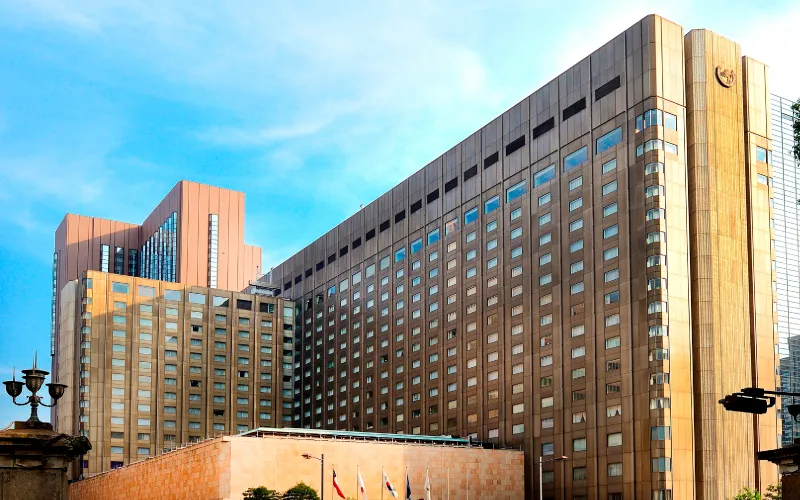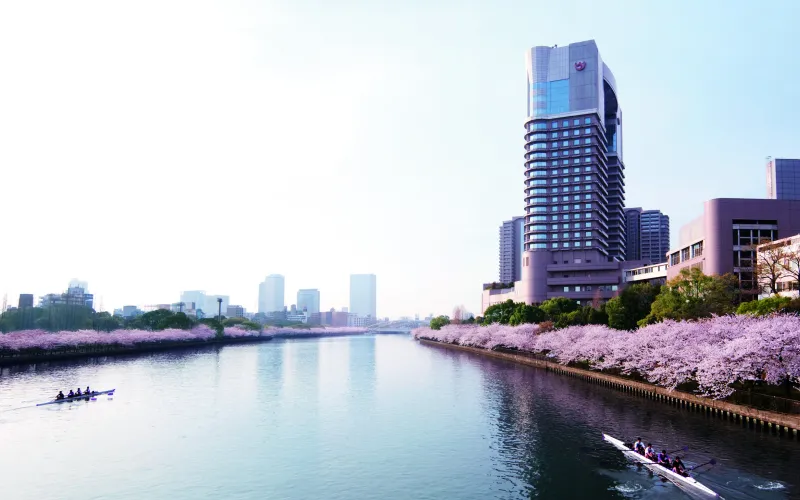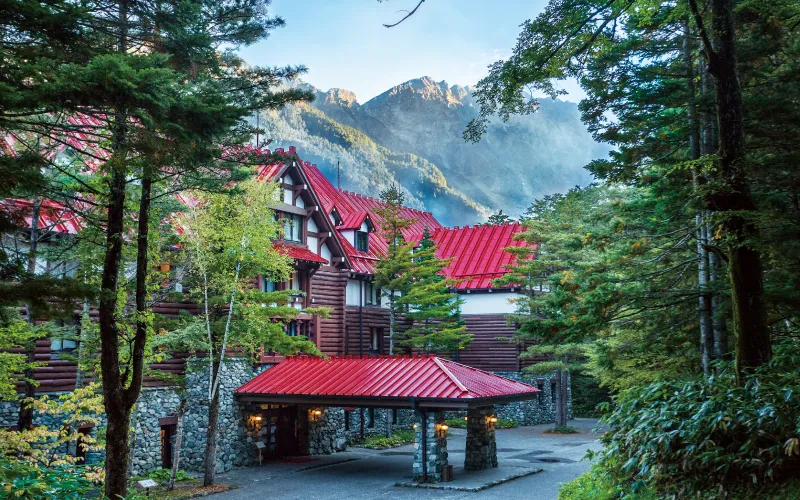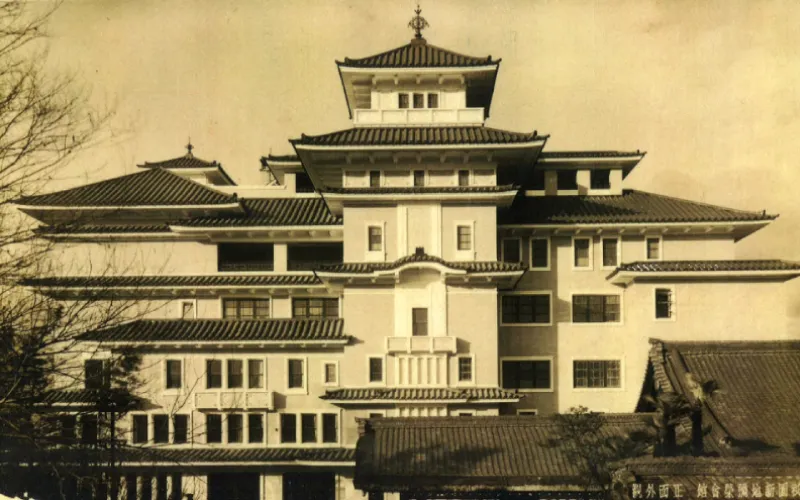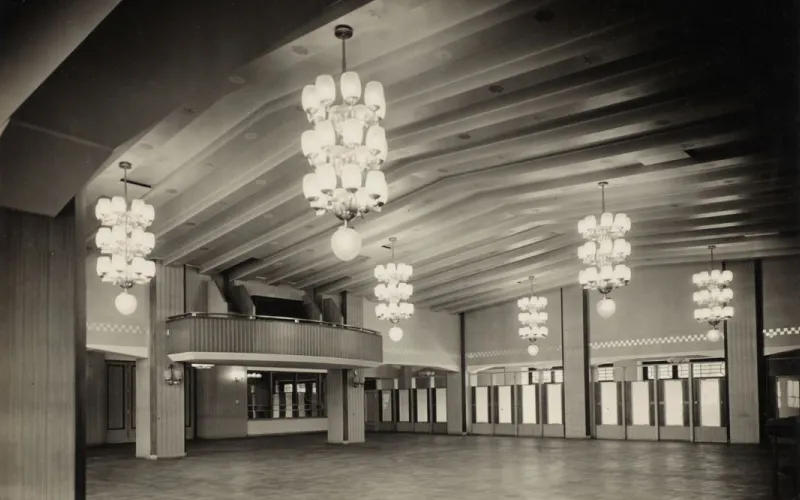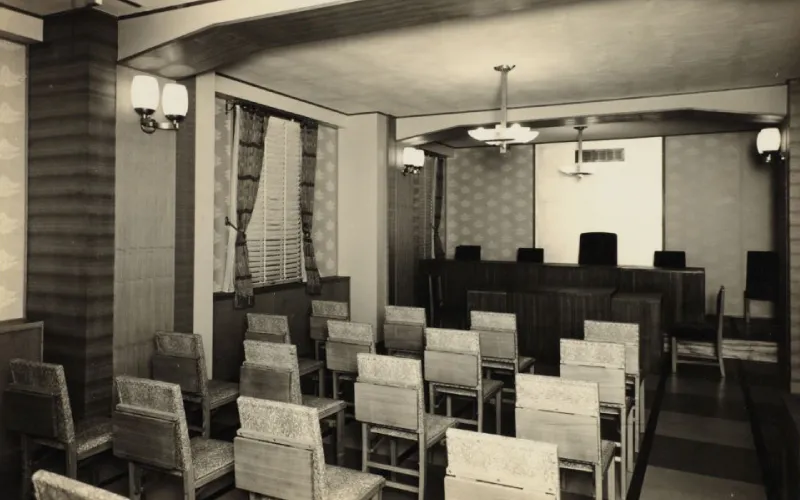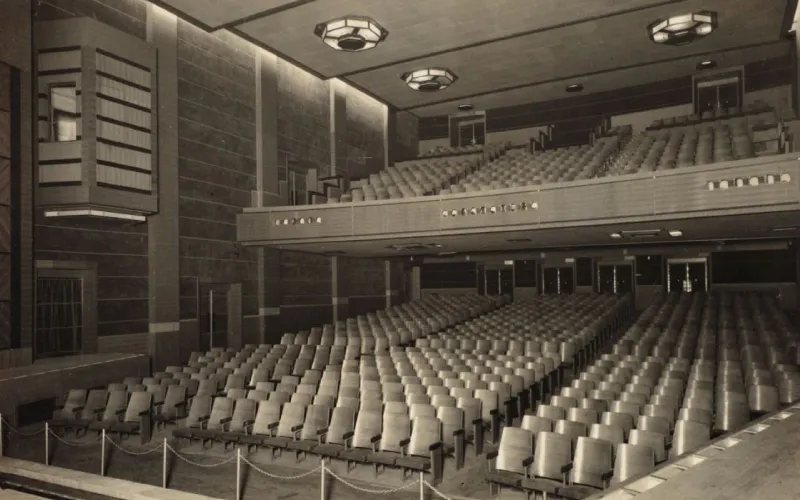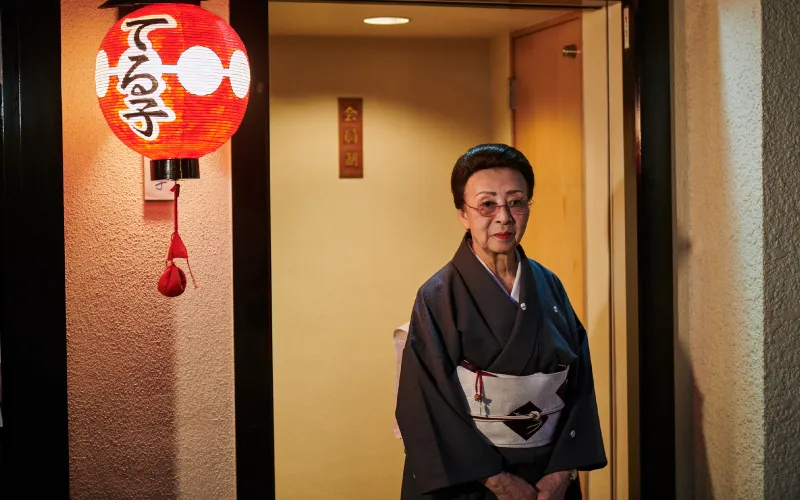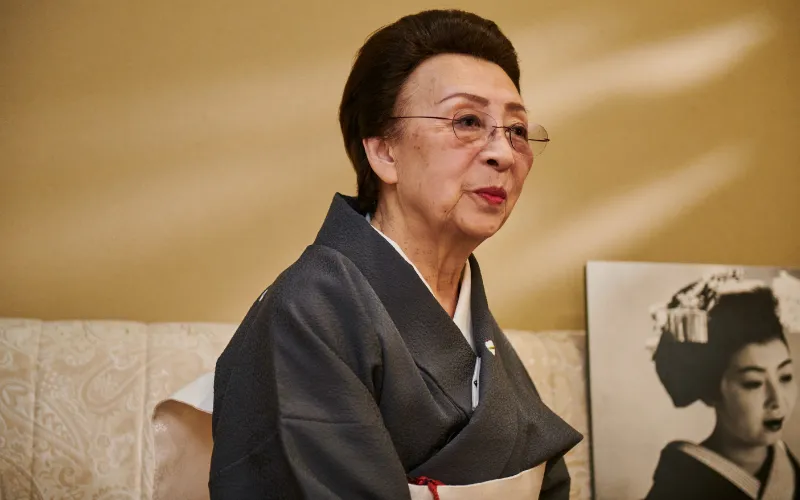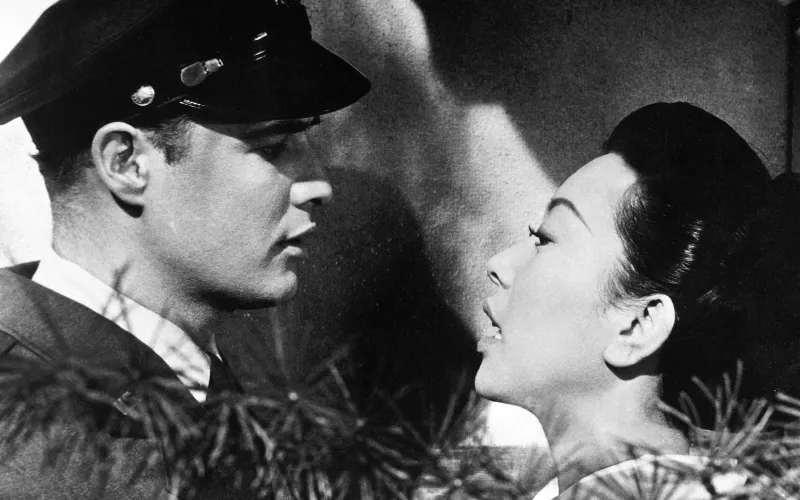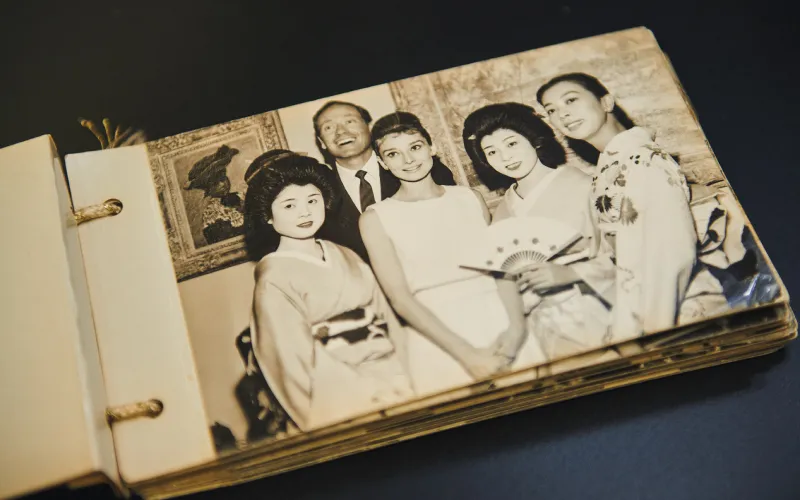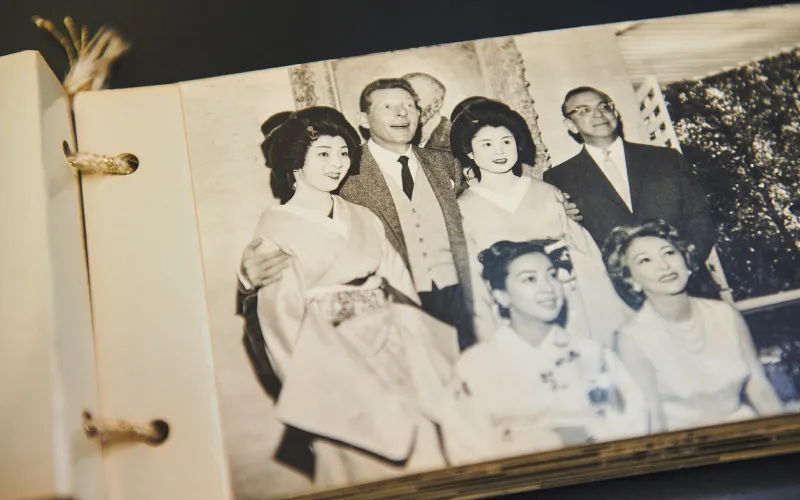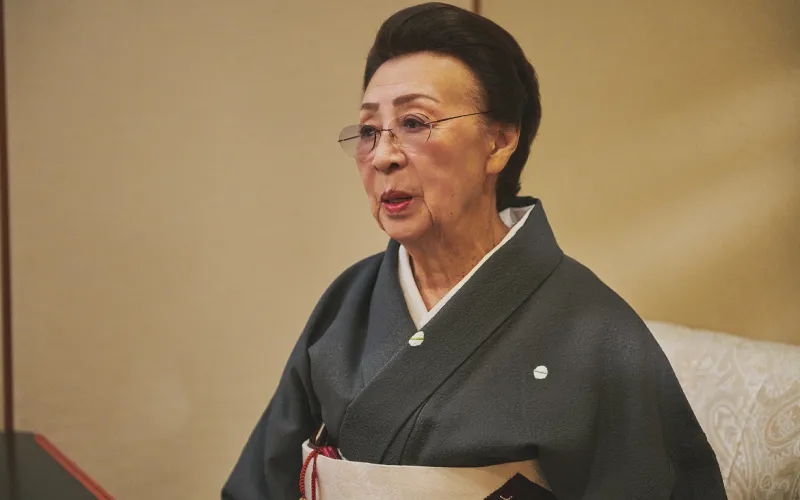Discover the Imperial Hotel, Kyoto - CHAPTER 02 -
Chic
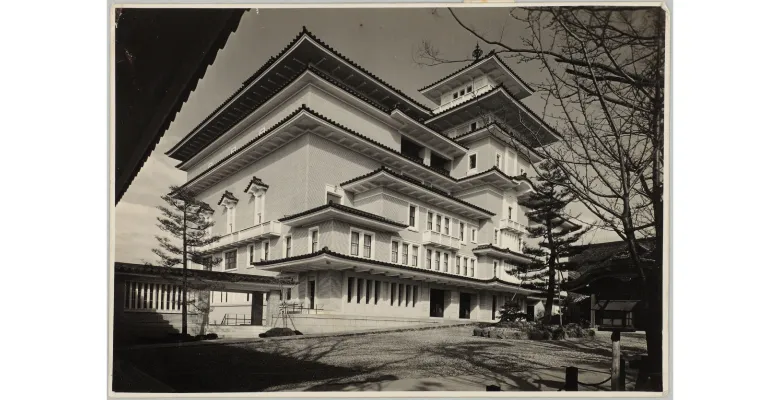
Discover Kyoto Through the Lens of Yasaka Kaikan: The Evolving Role of the Imperial Hotel
The Imperial Hotel was established in the wake of the Meiji Restoration to welcome foreign dignitaries during Japan’s drive toward modernization. Across the Meiji, Taisho, Showa, Heisei, and now Reiwa eras, it has upheld a commitment to the art of hospitality infused with the spirit of Japanese harmony. Now, a new stage begins in Kyoto’s Gion district at Yasaka Kaikan, a historical theater where the globally-renowned Japan’s timeless tradition of “omotenashi” hospitality has been faithfully preserved. This synergy between a "Made-in-Japan" hotel steeped in history and the enduring legacy of Kyoto marks the start of a truly unique and unprecedented new chapter in hospitality. Let us revisit this journey through archival photographs and the memories of those who visited Yasaka Kaikan as it once was.
The Imperial Hotel: Pursuing Timeless Hospitality for Every Era
Established in 1890 during Japan’s period of Westernization, the Imperial Hotel opened in Tokyo’s Hibiya area to serve as Japan’s guest house for visitors from abroad. Its founding was led by prominent figures in the business world, including Eiichi Shibusawa, who would later serve as the hotel’s first chairman. It was also supported by the Imperial Household Ministry and Japan’s leading financial conglomerates of the time. It was a hotel born of a rare unity between government and the private sector, symbolizing national prestige and a testament to Japan’s aspirations on the world stage.
Later, in 1923, the hotel unveiled its second-generation main building, designed by Frank Lloyd Wright, one of the most famous architects of the 20th century. This building, affectionately known as the “Wright Imperial,” became a cultural crossroads where East met West, and welcomed distinguished guests such as Charlie Chaplin and Helen Keller. In 1933, the Imperial Hotel, Kamikochi, Japan’s first full-fledged mountain resort, was established. In 1996, with the opening of Kansai International Airport as a new gateway to the world, the Imperial Hotel, Osaka opened in a city poised to grow into an international metropolis.
A Timeless Landmark of Gion
For its next stage in hospitality, the Imperial Hotel has chosen Yasaka Kaikan, a building in the heart of Kyoto’s Gion district. Completed in 1936 through contributions from the local geiko, maiko and teahouse associations, it was originally designed for theatrical performances, but later served as a venue for movies, dance halls, concerts, and other events. Across generations, it has remained a beloved and cherished Landmark for the local community and visitors.
Yasaka Kaikan’s defining hallmark is its distinctive architectural design. The building was designed by Tokusaburo Kimura, a celebrated theater architect known for works such as the Shochiku-za in Osaka and the Pontocho Kaburenjo. The structure was built using steel frame-reinforced concrete, rare for the time, and featured the artistry of Japanese aesthetics including deep eaves, copper-tiled roofs on every floor, and the center of the tower-like front has a design reminiscent of a castle keep. These thoughtful touches gave the building an elegant character that harmonized beautifully with the surrounding townscape of southern Gion.
Recognized as a Nationally Registered Tangible Cultural Property and a historic building in Kyoto City, this graceful and storied theater will be reborn in spring 2026 as Imperial Hotel, Kyoto, carrying forward its rich legacy into a new era.
Every Roof Tile Holds the Spirit of the Maiko and Geiko
“I heard that Yasaka Kaikan was built using money deducted from the ohana-dai, or the gratuities given to maiko and geiko,” says Teruko, the proprietress of the Gion teahouse “Kyoya” and owner of the bar “Gion Teruko.” Born in 1937, just one year after the completion of Yasaka Kaikan, she comes from a long line of Gion teahouse proprietors. Becoming a maiko at sixteen and a geiko at nineteen, she has extended her refined hospitality to prominent guests from Japan and around the world for over seventy years, including Queen Elizabeth II, former U.S. Ambassador Caroline Kennedy, and globally-renowned conductor Seiji Ozawa.
“My mother told me that when Yasaka Kaikan was built, there were about 300 teahouses and 800 to 1,000 maiko and geiko in Gion Kobu. Each of them contributed one yen from their gratuities, saving steadily to help fund the construction. I don’t know what one yen was worth back then, but thanks to their effort, the building was completed debt-free.”
Today, Kyoto is home to five geisha districts, and particularly Gion Kobu stands out as the oldest and most tradition-rich. Yasaka Kaikan, born from the hard-earned money of maiko and geiko, embodies their shared pride and enduring pride. In that sense, it echoes the origins of the Imperial Hotel, which was also built through the passion and vision of those striving for a modernization.
The similarities go far beyond that. Both the Imperial Hotel and Yasaka Kaikan have long served as cherished gathering places. As Teruko recalls, “When I was a child, Kyoto didn’t have other places like here. It was a valuable and special place where people could enjoy entertainment.”
“I remember climbing the spiral staircase outside the theater with my brother and neighborhood kids to watch foreign films like Ingrid Bergman movies and all sorts of roadshows. Such fond memories. When I became a maiko, I remember Takara Beer had a rooftop beer garden up there. Oh, and in the summer, they used to hold bon-odori dances in the plaza out front.”
With their shared roles as cultural landmarks and their deep-rooted histories, the meeting of the Imperial Hotel and Yasaka Kaikan feels almost destined. Their bond, forged through tradition and community, marks a new chapter in the story of Japanese hospitality.
Yasaka Kaikan, Storied Backdrop of the Hollywood Film
Yasaka Kaikan, beloved by the local community, also played a role in cultural dialogue between Japan and the West through the medium of film.
That film was the 1957 Hollywood production Sayonara, starring Marlon Brando. Set during the Korean War, it tells the story of an American soldier stationed in Japan who falls in love with a Japanese star in a musical theater troupe. The film was shot in both Kyoto and Tokyo, and Yasaka Kaikan appears in a pivotal scene as the place where the couple’s love is sealed.
“I believe the shoot in Kyoto lasted about a year,” recalls Teruko. “At the time, I was a maiko, and I remember they filmed at Yasaka Kaikan for quite a while. Marlon Brando used to come to Gion nearly every night after filming. There’s even a photo of him resting his head in my lap. Actually, I had a small part in the film too. Brando’s character has a fiancée in the U.S., and there’s a scene where he’s urged to give her up because he’s chosen to be with a Japanese woman. I appear as a maiko serving sake during that conversation. I’m also in a scene where they play parlor games.”
After the film was completed, Teruko took part in its promotion in the U. S. At a time when traveling abroad was not yet common, she toured cities like Honolulu, Los Angeles, and Washington, D.C., dressed in full kimono with a formal Japanese hairstyle.
“This was back when Japan Airlines had only one flight a week from Haneda. When I saw the clear blue ocean and palm trees in Waikiki, I just thought, ‘So this is Hawaii.’ But when I went to Hollywood and had my picture taken with Audrey Hepburn, I was truly thrilled. If it hadn’t been for a strike at the airline, I might’ve even had the chance to meet President Kennedy.”
Hopes for the Imperial Hotel, Kyoto
Following seismic assessment conducted in 2014, Yasaka Kaikan underwent partial renovations and structural reinforcements in 2017, and had since been used as a venue for experiencing traditional Japanese performing arts. Reflecting on that time, Teruko says, “It was heartbreaking to see the aging of the theater. The tiles were coming off, and it looked so forlorn.”
“That’s why I felt so grateful when the Imperial Hotel decided to come in and bring new life to the place. Gion doesn’t have the same strength it once had—
Because there are fewer teahouses and fewer geiko and maiko in Gion, it’s no longer possible to do things the way we did back when the theater was first built. So to receive help like this and have the hotel and the town support each other, that’s what I hope for. I feel a deep sense of gratitude toward Gion, where I was born and raised. The Imperial Hotel is the finest in Japan. I believe it will bring fresh energy and a new flow of visitors. And as for us, we’ll continue to refine our spirit of hospitality as we always have, and look forward to welcoming a new era.”
Discover the Imperial Hotel, Kyoto
Yasaka Kaikan,
once a sanctuary nestled beside the brilliance of Gion's performing arts,
begins a new chapter—revitalized, yet deeply rooted in its legacy.
Set to open in 2026 as the Imperial Hotel, Kyoto,
it welcomes you to a timeless retreat
where comfort takes center stage in every moment you spend.

